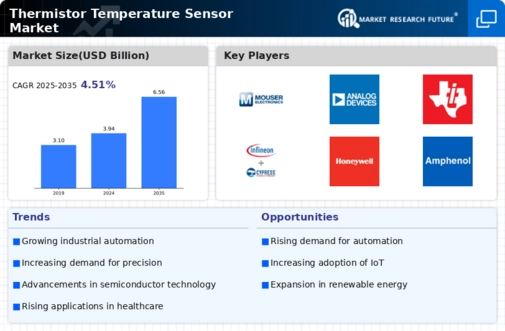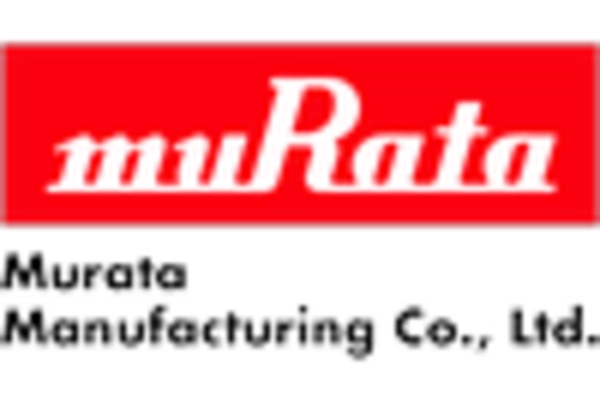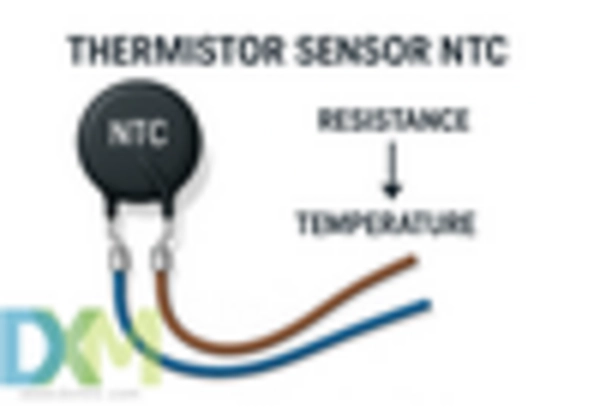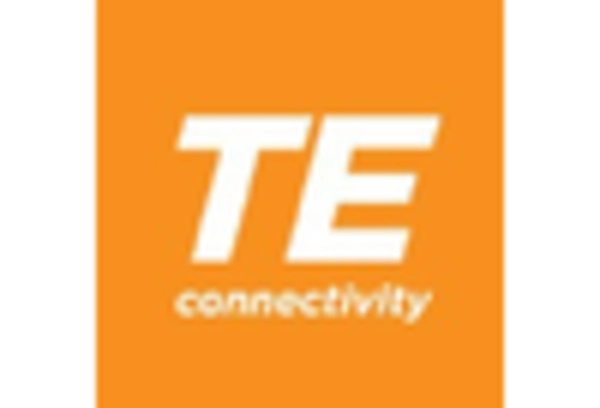Advancements in Medical Devices
The Thermistor Temperature Sensor Market is also benefiting from advancements in medical technology. Thermistors are integral to various medical devices, including patient monitoring systems, thermometers, and incubators. The increasing emphasis on patient safety and the demand for accurate temperature readings in healthcare settings are driving the adoption of thermistors. The market for medical devices is expected to grow at a rate of approximately 7% annually, with thermistors playing a crucial role in ensuring the reliability of these devices. Furthermore, the ongoing development of telemedicine and remote patient monitoring solutions is likely to enhance the demand for thermistor-based sensors, as healthcare providers seek to maintain high standards of care.
Growth in Automotive Applications
The automotive sector is increasingly adopting thermistor temperature sensors, thereby propelling the Thermistor Temperature Sensor Market forward. With the rise of electric vehicles and advanced driver-assistance systems, precise temperature management is critical for battery performance and overall vehicle safety. Thermistors are utilized in various applications, including battery management systems, climate control, and engine temperature monitoring. The automotive industry is projected to witness a significant shift towards electric vehicles, with estimates indicating that by 2030, electric vehicles could account for over 30% of total vehicle sales. This transition necessitates reliable temperature sensing solutions, positioning thermistors as essential components in modern automotive design.
Rising Demand in Consumer Electronics
The Thermistor Temperature Sensor Market is experiencing a notable surge in demand, particularly within the consumer electronics sector. As devices become increasingly sophisticated, the need for precise temperature monitoring has escalated. Thermistors, known for their rapid response times and accuracy, are being integrated into a variety of consumer products, including smartphones, laptops, and home appliances. This trend is projected to drive the market significantly, with estimates suggesting a compound annual growth rate of around 6% over the next few years. The proliferation of smart home technologies further amplifies this demand, as consumers seek enhanced functionality and energy efficiency in their devices. Consequently, manufacturers are focusing on developing advanced thermistor solutions that cater to these evolving consumer preferences.
Emerging Applications in Renewable Energy
The Thermistor Temperature Sensor Market is poised for growth due to emerging applications in the renewable energy sector. As the world shifts towards sustainable energy sources, the need for efficient temperature management in solar panels, wind turbines, and energy storage systems becomes critical. Thermistors are utilized to monitor and optimize the performance of these systems, ensuring they operate within safe temperature ranges. The renewable energy market is expected to expand significantly, with projections indicating a growth rate of approximately 8% annually. This trend presents a substantial opportunity for thermistor manufacturers to innovate and develop specialized sensors tailored for renewable energy applications, thereby enhancing the overall efficiency and reliability of these systems.
Industrial Automation and Control Systems
The rise of industrial automation is significantly influencing the Thermistor Temperature Sensor Market. As industries strive for greater efficiency and productivity, the integration of advanced temperature sensing technologies becomes paramount. Thermistors are widely used in manufacturing processes, HVAC systems, and equipment monitoring, where precise temperature control is essential. The Thermistor Temperature Sensor Market is projected to grow substantially, with estimates suggesting a compound annual growth rate of around 9% over the next five years. This growth is likely to drive the demand for thermistors, as industries increasingly rely on data-driven decision-making and automation to optimize operations. Consequently, manufacturers are focusing on developing robust thermistor solutions that can withstand harsh industrial environments.


















Leave a Comment